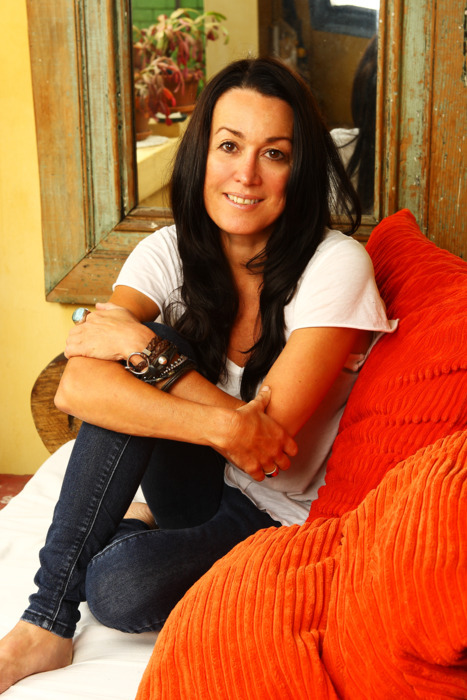Everyone’s entitled to their opinion and it’s not my place to say who is right or wrong, but I’m keen to publish a variety of views on this subject. Anne-Maree Sargeant has a vehemently anti-replica stance. As editor at large of belle magazine, creator of design blog The Snap Assembly and someone who helped set up Space Furniture for founder Kevin Jarrett, she knows a thing or two about design and what goes into producing original furniture. But she argues it is everyone’s responsilbity to be informed about what they’re buying and how ethical, environmentally friendly and fair it really is. I asked AMS a few questions on the topic and here’s what she had to say…

What do you think of the recent Herman Miller v Matt Blatt court case and the eventual outcome being settled out of court? Satisfactory? A triumph for designers?
It’s a small, very positive step to a much larger argument! Design registration is an expensive and complex process, with laws differing from country to country. The Danes protect a design for around 70 years and brands like Friz Hansen are as litigious as Herman Miller. Similarly, Italian design vanguard Cassina won a court battle with a hotel which had originals in the foyers and fakes/copies elsewhere. There are so many variables there is not a quick answer but the simplest understanding is a designer has to design register their work in each country to protect it. Even the big name manufacturers can’t afford to do this, let alone designers.
Why is replica furniture wrong?
Copying an original design denies the designer their royalty: the payment for their original idea. ‘Replica’ is taking the soft line. With a handbag it’s genuine or real vs fake/a copy/not real. Similarly, furniture and lighting that are not authorised should be labelled fake. Consumers have no knowledge of the working conditions, workers’ exposure to toxins, use of unethical and environmentally damaging materials and processes. You get what you pay for, so the products don’t last (ask anyone who’s broken a fake Philippe Starck designed ‘Ghost’ chair or a fake Arne Jacobsen designed ‘Series 7’ chair) generating landfill, not objects of desire that are passed through generations.
Does it it makes a difference if the designer is still living and why?
Of course it doesn’t. Copying a design is stealing IP. A real Picasso leaves a fake Picasso for dead. As with the Picasso Foundation, established to promote the great master’s work, famous designers have bodies to protect their design IP. Herman Miller are committed to authenticity, irrespective of the designer still being alive.
Is well designed furniture only for the wealthy?
Assuming good design is expensive is an oxymoron! In the case of Cassina Maestri who are authorised to produce Le Corbusier’s furniture, the brand embark on a process. They pay a fee to the foundation as well as a royalty for each piece sold, working closely with the foundation to ensure the execution is of the highest standard. There are vast costs involved with tooling for manufacturing, ultimately the big spend prior to the product getting to market, which is reflected in the selling price.
Where can everyday people buy original, affordable designs?
Join, Keith Melbourne’s new set of glass-inspired utility tables, there’s loads of great affordable design. Then there’s auctions and markets. I recently scored a Cassina SuperLegeria for $200 ($1,200 at Space), a Castiglione designed set of Zanotta tractor stools (less than half price) and my favourite Vico Magistretti kitchen stool (all for less than the price of a fake) at auctions.
There have always been copies, of handbags, fashion etc. Is this any different?
Every industry is different, some are highly regulated, others not. The music industry takes the hard line with copyright – the recent case of Men at Work losing to the licensee of The Kookaburra Song is a good example. As a writer, I have control over my IP and sign copyright according to usage. The fashion industry is a law unto itself (read Dana Thomas’ How Luxury Lost Its Lustre, a MUST-read for anyone pro unregulated manufacturing. It makes you vote with your wallet when you learn about children locked in factories, their legs tied to prevent them leaving…
Do you think your design background puts you in a better position to comment?
I studied interior design (RMIT) and later spent many years running Space Furniture, which I helped start for the founder Kevin Jarrett, so I guess 20 years of working with the top rung factories and being a design journalist for that duration perhaps gives a bit of knowledge. But anyone can be informed. It’s personal preference to be informed. The same as knowing if the tinned tuna one buys is sustainable or if the brand pursues overfished species, pushing them to extinction.
Interiors magazines feature replica furniture all the time. Do you think they are setting a bad example or bowing to popular culture?
That’s an entirely different conversation that I am not qualified to answer, although I can commit to only promoting/reporting on original work.
Any final food for thought?
Be original, stop following trends, buy vintage or at auctions or garage sales if you’re on a budget, be informed and spend ethically.
The Snap Assembly is on Facebook.
Photo copyright Sonny Vandevelde, Sonny Photos





